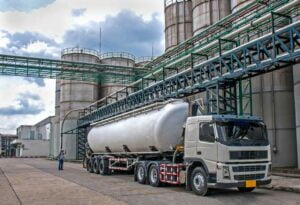Polyvinylidene Difluoride, commonly known as PVDF, is a versatile polymer with a wide range of applications due to its unique properties. In this comprehensive guide, we will delve into the various applications and properties of PVDF, exploring its uses across different industries and highlighting its significance in today’s world.
1. Introduction

Qu’est-ce que le PVDF ?
Polyvinylidene Difluoride, abbreviated as PVDF, is a high-performance thermoplastic polymer. It is a synthetic material composed of repeating units of vinylidene fluoride (CH2CF2). PVDF is known for its exceptional chemical resistance, mechanical strength, and electrical properties, making it suitable for a wide range of applications in various industries.
Importance of PVDF in Modern Industries
PVDF has gained prominence in recent years due to its unique combination of properties. Its applications span across sectors such as electrical and electronics, chemical processing, medical, construction, aerospace, oil and gas, renewable energy, and textiles. This versatility makes PVDF an indispensable material in many technological advancements and industrial processes.
2. Properties of PVDF
Chemical Structure and Composition
PVDF is a semi-crystalline polymer consisting of carbon, hydrogen, and fluorine atoms. Its chemical structure includes a repeating unit of vinylidene fluoride, as shown below:
[Insert Chemical Structure Diagram]
This unique structure gives PVDF its remarkable properties, including high chemical resistance and a crystalline structure that provides exceptional mechanical strength.
Mechanical Properties
PVDF exhibits outstanding mechanical properties, such as high tensile strength, toughness, and resistance to impact. These characteristics make it suitable for applications requiring structural integrity and durability.
Stabilité thermique
PVDF can withstand a wide range of temperatures, from as low as -40°C to as high as 150°C, without significant degradation. This thermal stability is crucial for applications in extreme environments.
Electrical Properties
PVDF is an excellent electrical insulator, making it ideal for use in electrical components and devices. It has a low dielectric constant and is capable of maintaining its electrical properties even in high-temperature environments.
Propriétés diélectriques
PVDF possesses exceptional dielectric properties, making it suitable for capacitors and piezoelectric applications. Its piezoelectricity allows it to generate electric charge in response to mechanical stress, making it valuable in sensors and transducers.
3. Applications du PVDF
Électrique et électronique
Insulation in Wiring
PVDF is used as insulation material in electrical wiring due to its excellent electrical properties. It ensures the safe and efficient transmission of electricity in various applications.
Piezoelectric Sensors
PVDF’s piezoelectric properties make it ideal for sensors used in applications such as pressure measurement, ultrasonic devices, and medical diagnostic equipment.
Capacitors and Batteries
PVDF is employed in the production of high-performance capacitors and batteries, where its dielectric properties enhance energy storage and discharge efficiency.
Traitement chimique
Corrosion-Resistant Linings
PVDF’s resistance to chemicals and corrosion makes it suitable for lining tanks and pipes in chemical processing plants, protecting them from aggressive substances.
Filtration Membranes
PVDF membranes are used in filtration processes to separate solids from liquids in various industries, including pharmaceuticals and wastewater treatment.
Chemical Piping
PVDF pipes are used for transporting corrosive chemicals safely, thanks to the material’s chemical resistance and durability.
Médical
Biocompatible Coatings
PVDF coatings are applied to medical implants and devices because of their biocompatibility, ensuring minimal adverse reactions within the human body.
Drug Delivery Systems
PVDF is used in drug delivery systems, where it can control the release of medications over time, improving patient treatment.
Dental Materials
PVDF is employed in dental applications, including orthodontic wires and dental prosthetics, due to its biocompatibility and durability.
Construction
Revêtements architecturaux
PVDF-based coatings are used in architectural applications to provide long-lasting protection against weathering, UV radiation, and environmental pollutants.
Roofing Membranes
PVDF roofing membranes offer excellent weather resistance and durability, making them a popular choice for commercial and industrial buildings.
Cable Insulation
PVDF is used as cable insulation material in the construction industry, ensuring the safety and reliability of electrical systems.
Aérospatial
Aircraft Components
PVDF is used in aircraft components such as fuel tanks, valves, and air ducts due to its lightweight, durable, and fire-resistant properties.
Antenna Radomes
PVDF radomes protect antennas on aircraft, ensuring signal integrity and reducing electromagnetic interference.
Fuel Cells
PVDF is used in fuel cell technology for its chemical resistance and ability to withstand harsh operating conditions.
Pétrole et Gaz
Oil Pipeline Linings
PVDF linings are applied to protect oil pipelines from corrosion, ensuring the integrity of the transportation infrastructure.
Offshore Equipment
PVDF is used in offshore equipment and platforms, where it can withstand the corrosive effects of seawater.
Chemical Storage Tanks
PVDF tanks are employed for storing and transporting various chemicals due to their resistance to chemical degradation.
Énergie renouvelable
Solar Panels
PVDF films are used in solar panels to encapsulate photovoltaic cells, providing weather resistance and electrical insulation.
Wind Turbine Blades
PVDF coatings on wind turbine blades enhance their performance and durability in challenging environmental conditions.
Energy Storage
PVDF-based materials are used in energy storage systems, including batteries and capacitors, to improve energy efficiency and longevity.
Textiles
Water-Repellent Fabrics
PVDF coatings are applied to textiles to make them water-repellent, ensuring comfort and functionality in outdoor clothing.
Coated Textile Materials
PVDF-coated textiles find applications in industries requiring durable and weather-resistant fabrics.
4. Advantages of PVDF

Durabilité
PVDF is known for its exceptional durability, making it suitable for long-term use in various applications.
Résistance chimique
PVDF exhibits high resistance to a wide range of chemicals, ensuring the integrity of equipment and structures in corrosive environments.
Stabilité thermique
PVDF can maintain its properties at both high and low temperatures, providing reliability in extreme conditions.
Résistance aux UV
PVDF is resistant to UV radiation, making it an excellent choice for outdoor applications that are exposed to sunlight.
Polyvalence
PVDF’s versatility allows it to excel in diverse industries, from electronics to construction, due to its unique combination of properties.
5. Challenges and Limitations
Processing Challenges
Processing PVDF can be challenging due to its high melting point and the need for specialized equipment.
Cost Considerations
PVDF can be more expensive than some other polymers, which may impact its adoption in cost-sensitive applications.
Préoccupations environnementales
While PVDF is highly durable, its production and disposal can raise environmental concerns. Recycling options are limited, and proper disposal is crucial.
6. FAQs about PVDF
What is the full form of PVDF?
PVDF stands for Polyvinylidene Difluoride.
How is PVDF different from other polymers?
PVDF distinguishes itself from other polymers through its unique combination of properties, including high chemical resistance, mechanical strength, and electrical insulating abilities.
Can PVDF be recycled?
PVDF recycling options are limited, and it is not commonly recycled due to the challenges associated with separating and reprocessing the material.
Est PVDF safe for medical applications?
Yes, PVDF is considered safe for medical applications due to its biocompatibility and resistance to bodily fluids.
What are the key factors to consider when choosing PVDF for a specific application?
When selecting PVDF for a specific application, factors such as chemical compatibility, temperature requirements, mechanical properties, and cost should be carefully considered to ensure optimal performance and cost-effectiveness.


